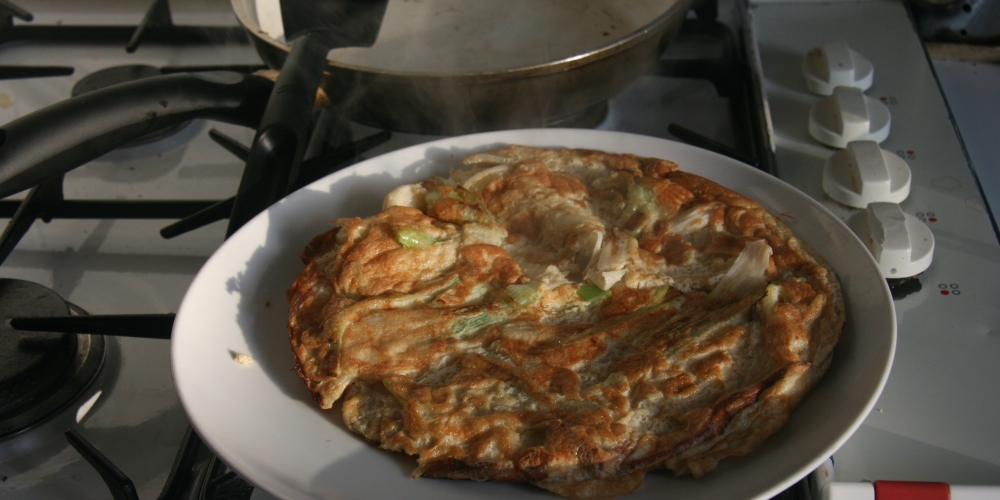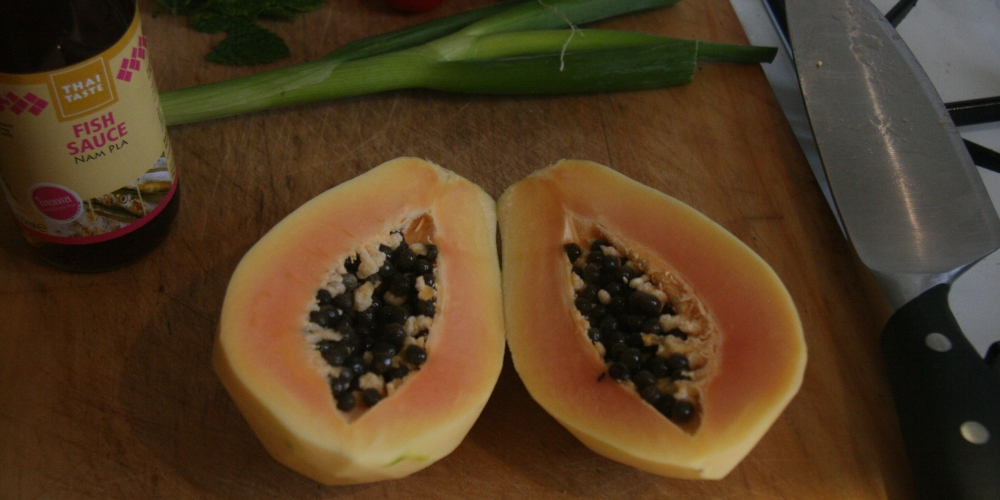I confess that despite it being famous all over Thailand and Cambodia, I only had papaya salad about 3 times in the 3 months I was there. And one can get it almost anywhere!
To see women in the roadside restaurants grating papaya or green mango (normally Julienne-style, although I didn’t know this was the name of the very long and thin result effect until after some curiosity google-ing recently) is so normal that it becomes part of the background scenery: particularly in advance of the pre-lunch rush. It was something that my host mum never made us: probably because she assumed we were having it already during the day, and because it is more Khmer/Thai than indigenous in itself consumption.
Despite initially unconvinced by the fruit-and-savoury salad idea, I’m glad I tried it. There’s something extremely refreshing in the texture as much as the taste, and it is one of those dishes that blends it’s flavours to create something completely different. I’m also a big, big fan of the garnish peanuts, which could be added to all dishes with my wholehearted approval!
Making the salad itself for the first time was pretty daunting and not without its challenges. I’ll primarily blame my tools (no Julienne peeler, but a food processor approximated something similar) and then my materials (ideally, quite raw papaya should have been used, but the standard British consumer isn’t typically looking for such products, and thus I could ONLY find relatively ripe pawpaw!). I used this recipe (found adapted on a different blog), adapted to what I wanted, and what I had. Adaptation and personalisation seems to be the sole constant in papaya salad recipies, so I at least felt confident in that.
Salad
1 (about 600 g) Green Mango, grated A papaya, obliterated.1 Tomato, coarsely diced Some cherry tomatoes, sliced. 3 Shallots, sliced A spring onion 1/4 Cup Chopped Coriander1/4 Cup Chopped Mint Leaves- 1 Red Chili, sliced
- 2 Tbsp Roasted Peanuts
- 2 cloves of garlic
- Some green beans (seemed like a good idea)
Dressing
- 2 1/2 Tbsp Fish Sauce
- 2 Tbsp Lime Juice
3-5 (as if!) 1 Thai Bird’s Eye Chilies, sliced- 1 Tbsp
Palm sugar Caster Sugar
The general method is to blend the onion, garlic, chili, lime juice, sugar and fish sauce (fermented anchovies, but just trust me on this one) in a pestle and mortar until combined, add the beans and tomatoes, and fold in the papaya. I taste-tested as I went, but I was dubious until the final product was on a plate! It was the idea light dinner, and I’d have it again as a lunch, a starter or a side dish: it’s so fresh and properly refreshing, and you do feel like you’ve had a savoury fruit salad for a whole meal. Papaya is great for the digestive system, the peanuts add some protein, and you could maximise the other vegetables if you wanted to.
I regret not having done more widespread taste testing when I had the chance!
























